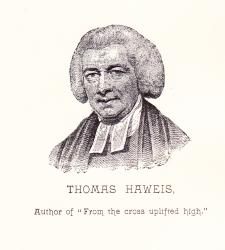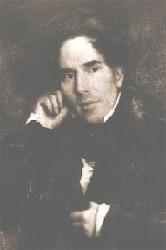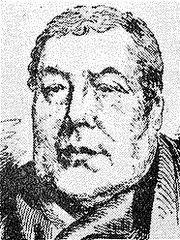Planning worship?
Check out our sister site, ZeteoSearch.org,
for 20+ additional resources related to your search.
- |
User Links
Search Results
Blest day of God, most calm, most bright
Author: John Mason Appears in 133 hymnals Used With Tune: BELMONT
Blest day of God, most calm, most bright
REDHEAD, 29
Meter: 8.6.8.6 Appears in 302 hymnals Tune Key: F Major Incipit: 11713 22114 31233 Used With Text: Blest day of God, most calm, most bright
REDHEAD, 29
RICHMOND (Haweis)
Meter: 8.6.8.6 Appears in 322 hymnals Composer and/or Arranger: Thomas Haweis Tune Sources: Carmina Christo, 1792 Tune Key: F Major Incipit: 51354 34213 25171 Used With Text: Blest Day of God, Most Calm, Most Bright
RICHMOND (Haweis)
Blest day of God! most calm, most bright
Author: Rev. J. Mason Hymnal: The Hymnal, Revised and Enlarged, as adopted by the General Convention of the Protestant Episcopal Church in the United States of America in the year of our Lord 1892 #31 (1894) Meter: 8.6.8.6 Lyrics: 1 Blest day of God! most calm, most bright,
The first, the best of days;
The laborer's rest, the saint's delight,
The day of prayer and praise.
2 My Saviour's face made thee to shine,
His rising thee did raise,
And made thee heavenly and divine
Beyond all other days.
3 The first-fruits oft of blessing prove
To all the sheaves behind;
And they the day of Christ who love,
A happy week shall find.
4 This day I must with God appear;
For, Lord, the day is Thine;
Help me to spend it in Thy fear,
And thus to make it mine.
Amen.
Topics: The Lord's Day Languages: English Tune Title: [Blest day of God! most calm, most bright]
Blest day of God! most calm, most bright
Blest Day of God, Most Calm, Most Bright
Author: John Mason Hymnal: The Junior Hymnal, Containing Sunday School and Luther League Liturgy and Hymns for the Sunday School #28 (1928) Languages: English Tune Title: [Blest day of God, most calm, most bright]
Blest Day of God, Most Calm, Most Bright
Blest day of God! most calm, most bright
Author: J. Mason; J. Mason Hymnal: The Church Hymnal #31b (1898) Meter: 8.6.8.6 Lyrics: 1 Blest day of God! most calm, most bright,
The first, the best of days;
The laborer's rest, the saint's delight,
The day of prayer and praise.
2 My Saviour's face made thee to shine,
His rising thee did raise,
And made thee heavenly and divine
Beyond all other days.
3 The first-fruits oft of blessing prove
To all the sheaves behind;
And they the day of Christ who love,
A happy week shall find.
4 This day I must with God appear;
For, Lord, the day is Thine;
Help me to spend it in Thy fear,
And thus to make it mine.
Amen.
Topics: The Lord's Day; The Lord's Day; Daily Prayer The Lord's Day Languages: English Tune Title: FERNSHAW
Blest day of God! most calm, most bright
Thomas Haweis

1734 - 1820 Composer of "RICHMOND (Haweis)" in The Cyber Hymnal Thomas Haweis (b. Redruth, Cornwall, England, 1734; d. Bath, England, 1820) Initially apprenticed to a surgeon and pharmacist, Haweis decided to study for the ministry at Oxford and was ordained in the Church of England in 1757. He served as curate of St. Mary Magdalen Church, Oxford, but was removed by the bishop from that position because of his Methodist leanings. He also was an assistant to Martin Madan at Locke Hospital, London. In 1764 he became rector of All Saints Church in Aldwinkle, Northamptonshire, and later served as administrator at Trevecca College, Wales, a school founded by the Countess of Huntingdon, whom Haweis served as chaplain. After completing advanced studies at Cambridge, he published a Bible commentary and a volume on church history. Haweis was strongly interested in missions and helped to found the London Mission Society. His hymn texts and tunes were published in Carmino Christo, or Hymns to the Savior (1792, expanded 1808).
Bert Polman
============================
Haweis, Thomas, LL.B., M.D., born at Truro, Cornwall, 1732. After practising for a time as a Physician, he entered Christ's College, Cambridge, where he graduated. Taking Holy Orders, he became Assistant Preacher to M. Madan at the Lock Hospital, London, and subsequently Rector of All Saints, Aldwincle, Northamptonshire. He was also Chaplain to Lady Huntingdon, and for several years officiated at her Chapel in Bath. He died at Bath, Feb. 11, 1820. He published several prose works, including A History of the Church, A Translation of the New Testament, and A Commentary on the Holy Bible. His hymns, a few of which are of more than ordinary merit, were published in his
Carmina Christo; or, Hymns to the Saviour. Designed for the Use and Comfort of Those who worship the Lamb that was slain. Bath, S. Hayward, 1792 (139 hymns), enlarged. London, 1808 (256 hymns). In 1794, or sometime after, but before the enlarged edition was published, two hymns "For the Fast-day, Feb. 28, 1794," were added to the first edition. These were, "Big with events, another year," and "Still o'er the deep the cannon's roar."
The most popular and widely used of his hymns are, "Behold the Lamb of God, Who bore," &c.; "Enthroned on high, Almighty Lord"; and “O Thou from Whom all goodness flows." The rest, all being from Carmina Christo, first edition 1792, are:—
1. Dark was the night and cold the ground. Gethsemane.
2. From the cross uplifted high. Christ in Glory.
3. Great Spirit, by Whose mighty power. Whitsuntide.
4. Submissive to Thy will, my God. Resignation.
5. The happy morn is come. Easter.
6. Thou Lamb of God, that on the tree. Good Friday. The hymn, "Thy Head, the crown of thorns that wears," in Stryker & Main's Church Praise Book, N. Y., 1882, begins with st. ii. of this hymn.
7. To Thee, my God and Saviour, My heart, &c. Praise for Redemption.
--John Julian, Dictionary of Hymnology (1907)
Thomas Haweis
William Gardiner

1770 - 1853 Person Name: W. Gardiner Composer of "BELMONT" in The Primitive Methodist Church Hymnal William Gardiner (b. Leicester, England, 1770; d. Leicester, 1853) The son of an English hosiery manufacturer, Gardiner took up his father's trade in addition to writing about music, composing, and editing. Having met Joseph Haydn and Ludwig van Beethoven on his business travels, Gardiner then proceeded to help popularize their compositions, especially Beethoven's, in England. He recorded his memories of various musicians in Music and Friends (3 volumes, 1838-1853). In the first two volumes of Sacred Melodies (1812, 1815), Gardiner turned melodies from composers such as Haydn, Mozart, and Beethoven into hymn tunes in an attempt to rejuvenate the singing of psalms. His work became an important model for American editors like Lowell Mason (see Mason's Boston Handel and Haydn Collection, 1822), and later hymnbook editors often turned to Gardiner as a source of tunes derived from classical music.
Bert Polman
William Gardiner
Samuel Webbe

1740 - 1816 Composer of "BELMONT" in Hymns of the Faith with Psalms Samuel Webbe (the elder; b. London, England, 1740; d. London, 1816) Webbe's father died soon after Samuel was born without providing financial security for the family. Thus Webbe received little education and was apprenticed to a cabinetmaker at the age of eleven. However, he was determined to study and taught himself Latin, Greek, Hebrew, French, German, and Italian while working on his apprenticeship. He also worked as a music copyist and received musical training from Carl Barbant, organist at the Bavarian Embassy. Restricted at this time in England, Roman Catholic worship was freely permitted in the foreign embassies. Because Webbe was Roman Catholic, he became organist at the Portuguese Chapel and later at the Sardinian and Spanish chapels in their respective embassies. He wrote much music for Roman Catholic services and composed hymn tunes, motets, and madrigals. Webbe is considered an outstanding composer of glees and catches, as is evident in his nine published collections of these smaller choral works. He also published A Collection of Sacred Music (c. 1790), A Collection of Masses for Small Choirs (1792), and, with his son Samuel (the younger), Antiphons in Six Books of Anthems (1818).
Bert Polman
Samuel Webbe


 My Starred Hymns
My Starred Hymns

